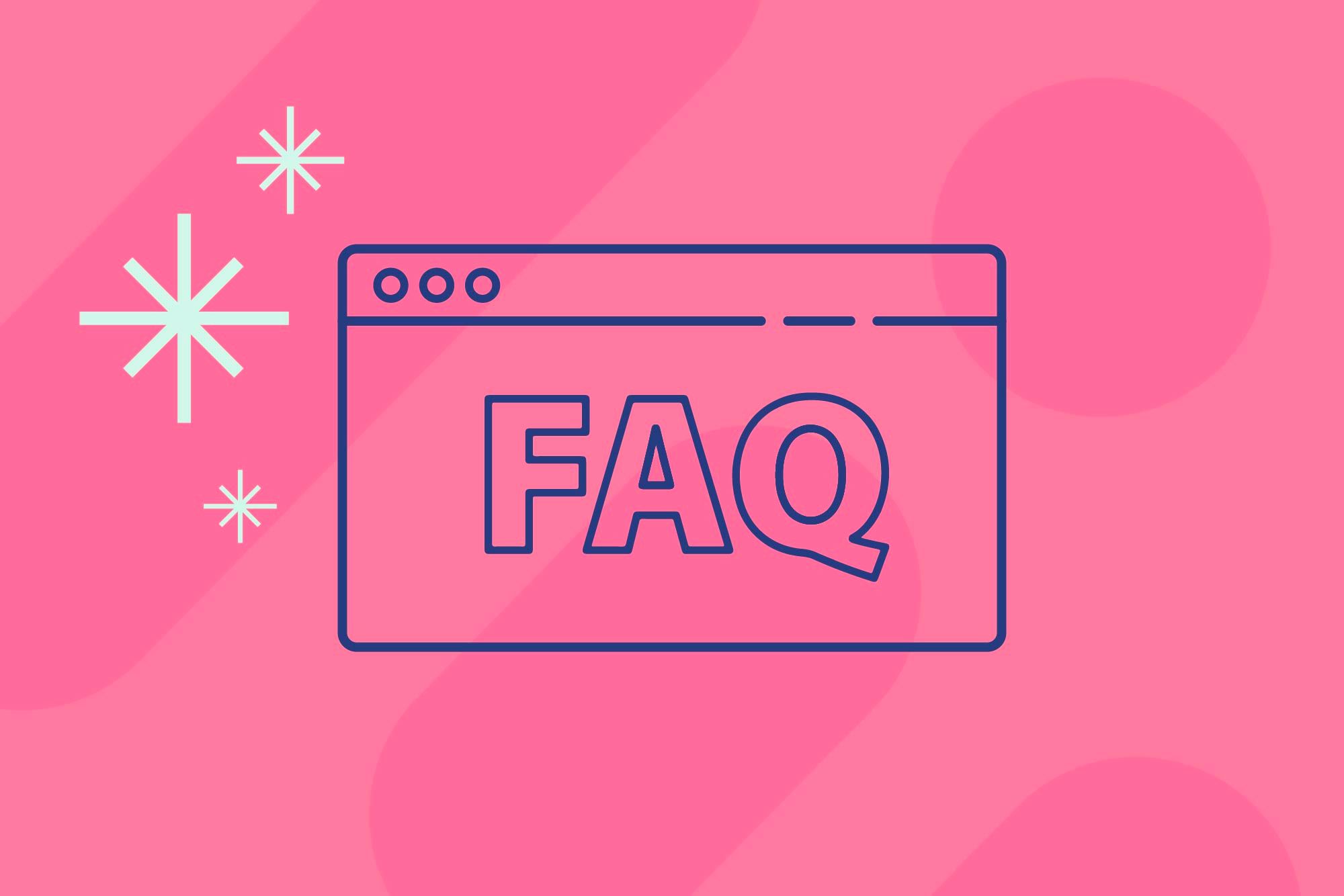Your Shopify store looks great, but the blog generates little traffic and fails to convert readers into buyers, leaving you wondering what to change. Choices in the Best Shopify Page Builders shape blog layout, mobile-friendly design, SEO, product storytelling, and how readers find posts through search and social media. This article highlights the best Shopify blog examples. It breaks down their content strategy, editorial planning, post formats, and conversion tactics, so you can copy proven ideas and test what works for your store.PagePilot's AI page builder helps you recreate those layouts, use SEO-friendly templates, and publish polished posts faster, so you can focus on product stories and content that convert.
Summary
- Narrowly targeted blog content wins higher-intent traffic and conversions, precision beats breadth, and stores that focus on revenue keywords see measurable gains, with Shopify blogs reporting a 126% increase in lead generation.
- Treating a blog as an asset factory multiplies creative output from a single post. For example, one well-researched article can be broken down into five ad hooks, two email sequences, and several social tiles, and 60% of consumers report feeling more positively about a company after reading custom content.
- Reducing manual assembly and version scattering is critical because automation significantly reduces launch time. Platforms that auto-extract product data and inject conversion sections can compress launch time from days to minutes. Rollout AI data shows that over 10,000 product pages have been generated, with up to 50% of development time saved.
- Technical and UX friction kills conversions on mobile and at checkout. Google finds that 53% of mobile visits are abandoned if pages load slower than 3 seconds, and Baymard Institute reports that 75% of shoppers abandon carts due to unexpected costs, so speed and upfront pricing are crucial.
- Make each article a measurable experiment with templates and a single hypothesis, pick three business KPIs and run 14 to 28-day tests, and remember that 80% of Shopify merchants use blogging as a core marketing tool.
- Discoverability and compounding organic traffic are long-term advantages of consistent blogging. HubSpot found that businesses that blog get 55% more website visitors, so regular publishing and structured SEO increase high-quality traffic you can retarget.
- PagePilot's AI page builder addresses this by auto-extracting product data, generating conversion-first templates, and publishing pages in minutes so teams can run more rapid, measurable content experiments.
21 Shopify Blog Examples from Stores Doing Great with Organic Traffic

1. Beardbrand
- What they do: Laser-focus content on a narrowly defined buyer persona, which lets them rank for revenue-driving terms like "beard oil vs. beard balm."
- Why it matters: Precision beats breadth; fewer, targeted posts win higher-intent traffic that converts.
- Quick win to copy: Pick three revenue keywords and build a clean, repeatable article template with a clear CTA and simple product callouts.
2. Gymshark
- What they do: Publish high-value how-to content that solves search intent without hard-selling, keeping readers in the top-of-funnel.
- Why it matters: Helpful content builds awareness; retargeting turns that awareness into conversions later.
- Quick win: Use GIFs or short clips for exercise demos and pair each post with a lightweight retargeting segment.
3. The Farmer’s Dog
- What they do: Publish vet-reviewed, authoritative posts that double as trust signals and acquisition drivers.
- Why it matters: Expert-backed content closes the credibility gap for high-consideration purchases.
- Quick win: Add author credentials and a trial-oriented CTA embedded early in the article.
4. Made In Cookware
- What they do: Combine deep product tutorials, recipes, and care guides to extend lifetime value and reduce returns.
- Why it matters: Education becomes aftercare and reduces friction during purchase and use.
- Quick win: Publish product-specific tutorials that link directly to related SKUs and bundle suggestions.
5. Muse Blog
- What they do: Minimal, clinical design that mirrors product positioning and reduces cognitive load for readers.
- Why it matters: The visual tone primes readers for the product experience and reinforces claims.
- Quick win: Tighten typography, add a table of contents, and use whitespace to signal authority.
6. Brooklinem
- What they do: Expand category relevance with lifestyle content, turning bedding into a broader brand experience.
- Why it matters: Lifestyle content increases shareability and gives shoppers more reasons to return.
- Quick win: Test one lifestyle pillar (sleep hygiene, interior design) and measure list signups per post.
7. Tushy
- What they do: Adopt a bold, distinctive voice that creates memorability and organic share potential.
- Why it matters: Personality-driven content attracts attention where commodity products otherwise struggle.
- Quick win: Write one irreverent evergreen post that answers an odd but high-volume query your audience searches.
8. Heights
- What they do: Customize blog layout to match the brand font system, narrow paragraph width for readability, and include CTA blocks.
- Why it matters: Small design choices materially increase time on page and CTA clicks.
- Quick win: Add a sticky CTA section and measure scroll-to-CTA conversion before/after.
9. Huel
- What they do: Sensible content taxonomy, breaking posts into clear categories so readers can find targeted nutrition guidance fast.
- Why it matters: Content findability is as important as quality for organic retention.
- Quick win: Add thin category filters and an internal search that surfaces product-linked posts.
10. ThirdLove
- What they do: Integrate interactive elements like fit quizzes and testimonials directly into content.
- Why it matters: Interactivity converts education into action without forcing a hard sell.
- Quick win: Embed a short quiz inside a product guide and capture emails before showing personalized recommendations.
11. Perfect Keto
- What they do: Present dense scientific claims in scannable, modular formats with ample subheads and bullets.
- Why it matters: Readability equals trust for health categories, and easy scanning boosts retention.
- Quick win: Convert two long-form posts into modular sections and A/B test on bounce rate.
12. Ledger
- What they do: Stay hyper-niche and technical, turning complex security topics into actionable guides and product use cases.
- Why it matters: Niche authority earns backlinks and repeat visits from the exact audience that buys hardware wallets.
- Quick win: Produce one evergreen security checklist that links to specific SKUs.
13. Bulletproof
- What they do: Attach author credentials and citations to every health claim to build credibility.
- Why it matters: In wellness, traceability of claims reduces friction and returns.
- Quick win: Add a "Sources" section to five top-performing posts and watch engagement rise.
14. Fly Fish Food
- What they do: Integrate product links inside how-to tutorials so the content doubles as a soft commerce funnel.
- Why it matters: Instructional posts convert when readers are motivated to replicate the skill.
- Quick win: In every tutorial, include a "materials used" kit with direct add-to-cart links.
15. Goulet Pens
- What they do: Use a persistent related-posts sidebar to keep readers moving through adjacent content.
- Why it matters: Internal navigation increases session depth and SEO authority.
- Quick win: Test a sidebar slot for "Beginner's Guides" to boost first-time visitor engagement.
16. Ridge Wallet
- What they do: Fold FAQs into posts using collapsible elements so answers live where people look for them.
- Why it matters: Inline FAQs reduce support load and capture long-tail queries for search.
- Quick win: Add six product-specific FAQs to a top article and measure organic long-tail impressions.
17. Mr. Jones Watches
- What they do: Prioritize storytelling over product specs, using artist features and behind-the-scenes posts.
- Why it matters: Emotional attachment raises willingness to pay for limited editions.
- Quick win: Publish one "meet the artist" post per collection and track email signups tied to that narrative.
18. Unbound Merino
- What they do: Commit to long-form, practical travel guides that are genuinely useful for their audience.
- Why it matters: Deep utility content earns backlinks and positions the brand as indispensable to travelers.
- Quick win: Repurpose a long-form guide into a downloadable packing checklist to capture leads.
19. XMiles
- What they do: Keep posts concise, scannable, and visually appealing for a performance-driven audience that values their time.
- Why it matters: When your buyer is training, they want quick answers, not essays.
- Quick win: Convert two long posts into TL;DR plus "what to do next" blocks.
20. Keychron
- What they do: Use hook-first problem-solution posts with numbered tips to make technical content skimmable.
- Why it matters: A skimmable structure increases sharing among niche communities, such as programmers and creators.
- Quick win: Repurpose a popular forum thread into a structured tips post with product links.
21. WishTrend
- What they do: Use infographics and visual explainers to simplify complex skincare science and improve shareability.
- Why it matters: Visual storytelling compresses the time it takes to build trust and supports social distribution.
- Quick win: Convert a top post into a vertical infographic for social traffic and link back to the complete guide.
Related Reading
- Does Shopify Host Websites
- Is It Worth Buying a Prebuilt Shopify Store
- How Much Does It Cost to Build a Shopify Website
- Shopify Product Page Customization
- What is Custom Liquid Shopify
- How to Customize a Shopify Website
- Shopify Speed Optimization
Why Shopify Stores Need Blogs

A blog is not an optional marketing add-on for a Shopify store; it is an asset factory that creates reusable content, trust signals, and audience data you can repeatedly monetize. When you treat the blog as a source of product narratives, support docs, and creative raw material, it turns one-time traffic into ongoing tests and owned channels that ad budgets cannot sustain alone.
How Does a Blog Become a Content Factory?
Think beyond single posts. A single well-researched article can be split into five ad hooks, two email sequences, one FAQ block for product pages, and several image/quote tiles for social media, providing creative variety without requiring extra sourcing time.
That creative bounce matters because when shoppers read custom content, they form a stronger brand impression, a fact captured by Demand Metric that 60% of consumers feel more positive about a company after reading custom content on its site. Treating each post as an assembly line for assets ensures that every publishing decision multiplies your downstream testing cadence.
Can a Blog Reduce Support Load and Protect Margins?
Yes. Product care guides, troubleshooting posts, and sizing explainers live where customers look, not buried inside ticket systems. This reduces repetitive support work, lowers refund risk caused by misuse, and maintains uninterrupted conversion flows. The pattern appears across categories with frequent returns. Educate once, and you stop having to answer the same ticket dozens of times.
How Does Blogging Scale Discovery When Your Ad Budget Stalls?
Organic pages compound. Search visibility and referral links consistently bring new visitors without incurring per-click costs, and these visitors fuel retargeting pools that are less expensive to convert.
This effect is measurable in traffic lift for teams that commit to publishing rather than chasing one-off campaigns, which is why HubSpot found that businesses that blog get 55% more website visitors than those that don’t. A modest content cadence builds a steady inflow of testable audiences you own.
What Do You Gain That Paid Traffic Cannot Buy?
Owned signals are different from paid clicks. A reader who subscribes after receiving a helpful guide opts into future product updates, forming a behavioral cohort that you can retarget with higher relevance and lower CPCs. That trust converts better over time than a cold ad impression, and it makes your creative hypotheses sharper because you can observe real engagement before spending heavily to scale.
AI Product Page Builder
Our AI page builder will help you test products and angles far faster. Simply provide a competitor or supplier URL, and it will extract product details, produce a high-converting product page, and enhance visuals with the AI Product Image function, ensuring you are not competing with exact copy or images. Start a FREE Trial and generate 3 product pages for free today, no credit card needed.
Related Reading
- Hire Someone to Build Shopify Store
- Shopify User Experience
- How to Add Products to Shopify
- How to Design Shopify Website
- How to Create a New Page Template in Shopify
- How to Create a Landing Page on Shopify
- Shopify Mobile Optimization
- How to Add a Review Section on Shopify
What Makes a Great Shopify Blog

Great Shopify blogs transform content into measurable experiments and repeatable assets, rather than one-off posts. They are built with modular templates, clear hypotheses, and tracking, so every article either proves an idea or teaches you something actionable about customers.
How Do You Structure Posts So Teams Can Test Fast?
Create article templates that map directly to a hypothesis, with labeled sections for audience intent, key benefit, proof, and a single, testable call to action. Treat each post like a product landing page, featuring a hero claim, a short how-to guide, one embedded product card, and a compact test segment for the CTA.
When teams use templates, they can swap in product data and go live in minutes, which keeps creative variation consistent and measurable. According to Shopify Blog, 80% of Shopify merchants use blogging as a marketing tool, and that infrastructure becomes the backbone of how most stores attract attention.
How Should You Measure Whether a Post Actually Moves the Business?
Select three business KPIs per post and tie them to specific, tangible events, rather than vanity metrics. Primary examples include lead signups, add-to-cart rates from article links, and product page conversions for referrals. Use UTMs and a short-lived experiment tag on product variants to see which headline or image produces the real lift.
That way, you know if a post is content that educates or content that sells. Shopify data shows this matters, since Shopify blogs see a 126% increase in lead generation, meaning measurement lets you turn readers into repeatable pipelines.
Why Does Tone and Utility Matter More Than Promotion?
This pattern is evident across small and mid-sized stores. Posts that read like native advice attract attention, while posts that push discounts or specs push readers away. Readers want answers, not ads.
Use short how-to steps, checklists, or troubleshooting modules that genuinely solve one problem, then mention product fit as a logical next step. That approach builds trust and creates higher-quality leads, because people who stay to read are already primed to consider solutions.
What Breaks When Teams Try to Scale Content Manually?
Most teams draft posts in Google Docs, chase approvals in Slack, and paste images manually into Shopify. That familiar workflow works at first, but as volume grows, edits fragment, CTAs drift, and launch velocity collapses. Versions multiply, and you lose the ability to run clean A/B tests across dozens of SKUs, which means months of opportunity are lost to administrative work.
How Do Platforms Change That Friction?
Platforms like PagePilot.ai provide product data extraction from supplier links, conversion-first page templates, and ready-to-import ad creatives, allowing teams to publish pages in minutes rather than days. Teams find that automating the repetitive pieces, while retaining a short manual review for messaging, compresses launch time by an order of magnitude and preserves consistent CTAs and tracking across variants.
How Do You Build a Content Calendar That Scales Without Burning the Team?
Batch work by outcome, not topic. Spend one day per month creating five template-driven posts that differ only by audience skin and hero image. Assign each post a clear experiment window and an owner responsible for analysis after 14 days.
Reuse a single long-form post to generate three ad hooks, two email sequences, and several social tiles. This assembly-line approach increases cadence without increasing cognitive load.
What Small Technical Choices Raise Engagement and Sharing?
Add structured data for how-to steps and FAQs so search engines surface rich snippets. Insert a compact table of contents with anchor links for long posts, and lazy-load images to keep mobile pages fast.
Use a single persistent related-post slot that surfaces items by behavioral similarity, not just category, so session depth rises. These are low-effort, high-return moves that increase both discoverability and the quality of traffic.
How to Apply These Examples to Your Store

Treat the examples as templates for experiments that you can copy, run, and measure, rather than as one-off posts. Turn a winning article into a repeatable page template, wire it to a clear hypothesis and tracking, and use short test windows to decide whether to scale or kill an idea.
What Exactly Should a Launch-Ready Article Template Do for You?
Make the template answer one hypothesis, no more. Start with a 10-word hypothesis, for example, "A how-to guide will lift the add-to-cart rate for Product X by 15%." Build four labeled blocks into the template, such as claim, proof (social or data), quick how-to or use case, and a single, benefit-led CTA.
Include a concise product card that displays the final price, shipping details, and an 'Add to Cart' link, allowing readers to take action without needing to search for additional information.
How Do You Turn a Blog Idea Into a Measurable Product Test?
Pick an audience slice and one primary KPI, then set a test window and control. For each post, assign UTM parameters, a clear owner, and a 14- to 28-day experiment window, depending on the traffic. Run two variants only, headline A and headline B, and keep everything else identical.
If one variant raises the KPI by a pre-set margin at the end of the window, clone the post into a product landing page and amplify the winning creative. This disciplined small-n testing stops opinions from driving decisions.
Which Content Moves the Needle Fastest on Mobile and Why?
Mobile visitors decide in seconds, so shave friction from the moment they tap. According to Google, 53% of mobile site visits are abandoned if pages take longer than 3 seconds to load. Pages that feel slow will never show your hypothesis a fair test.
Use responsive srcset, WebP for hero images, defer noncritical scripts, and inline above-the-fold CSS to protect your LCP. Treat each post like a lightweight landing page rather than a media-heavy essay.
How Should Blog Copy Handle Price and Checkout Friction?
Be explicit about out-of-the-door cost inside the article, not buried on product pages. According to Baymard Institute, 75% of online shoppers abandon their carts due to unexpected expenses. Therefore, include a short "What this costs" box that lists the price, shipping, and taxes for major zones.
One practical move is an interactive price example that updates when the reader selects a region, or a persistent "estimate your total" CTA that opens a mini-modal before users click to product pages.
What Common Team Failure Ruins Repeatability, and How Do You Avoid It?
This problem affects small teams and solo founders alike. Early momentum collapses because each post is handcrafted from scratch, approvals are scattered across documents, and nobody owns the experiment after publication.
The result is inconsistent CTAs, mixed messaging, and no usable signal. The fix is standardization. An article template library, a single owner per experiment, and a one-line experiment log that records hypothesis, traffic source, and KPI.
How Do You Repurpose One Successful Post Into Assets That Scale Tests?
Treat every post as five deliverables. The blog page, an email sequence headline + excerpt, two social hooks, one ad creative, and one FAQ block for product pages. Extract three short quotes for social, a 20-second clip for Reels, and a technical FAQ for support to reduce tickets. Reuse the winning headline copy verbatim in ad creatives; consistency between organic and paid creatives reduces wasted spend.
What Testing Cadence Prevents False Positives and Preserves Momentum?
Use short, repeatable windows. For paid traffic, a 7 to 14-day run often delivers clear signals. For organic traffic, use 28 days to capture slow-growing search behavior. Always run a holdout control to measure lift.
If you change more than one variable, label the experiment as exploratory, not definitive. This keeps the blog serving as an experiment rack that produces clean signals.
Related Reading
- How to Create Categories in Shopify
- How to Add a Personalization Option on Shop
- How to Create a Coming Soon Page on Shopify
- How to Add a FAQ Page on Shopify
- Shopify Liquid Code Examples
Start a FREE Trial and Generate 3 Product Pages with Our AI Page Builder Today
If you want to test products and angles without the usual friction, consider PagePilot. Simply enter a competitor or supplier URL, and it will automatically create a conversion-first Shopify product page, upgrade product images, and allow you to generate three pages for free with no credit card required.
That kind of velocity shows up in practice, with Rollout AI, reporting over 10,000 product pages generated, and Rollout AI, finding you can save up to 50% on development time, so you stop burning hours on manual assembly and get real signals to decide what to scale.





